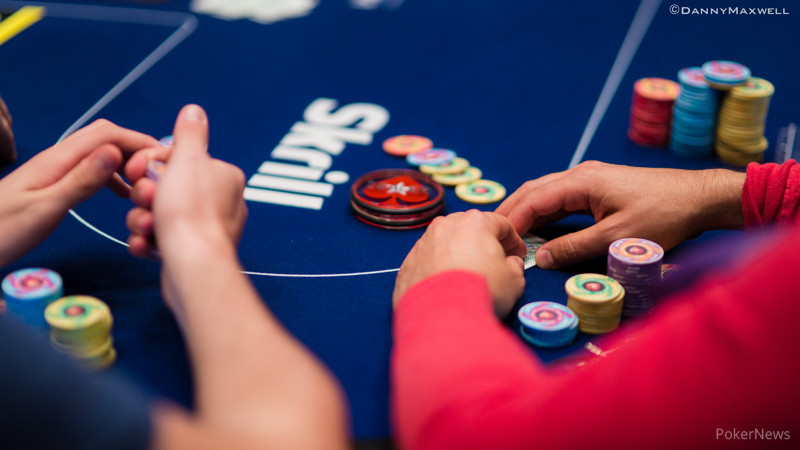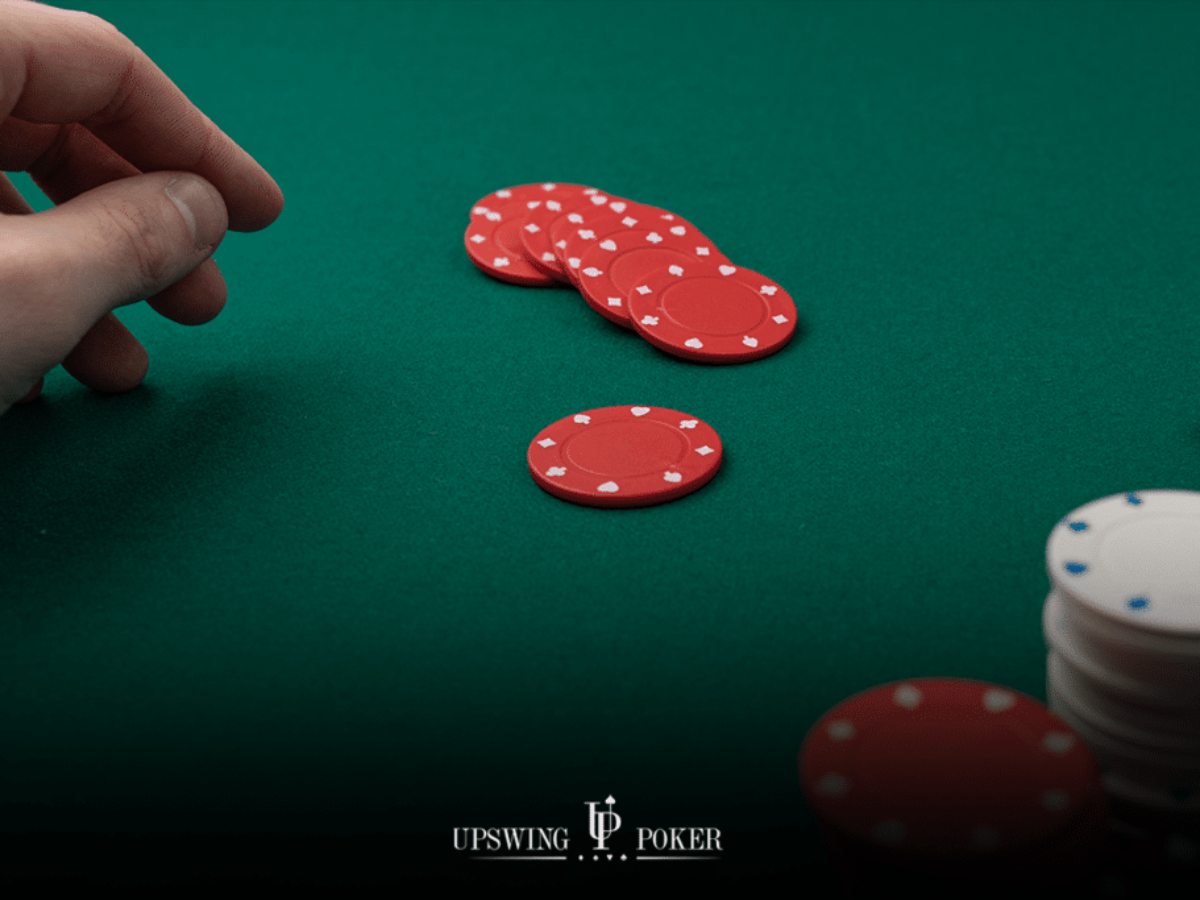Poker 3 Bet Pot
3-Bet pots often seem a lot trickier than 2-Bet pots since they are rarer and therefore less familiar. On top of this, it can also be more difficult to think clearly in 3-Bet pots due to there being more money at stake. Let’s explore how to handle these situations in the role of the defender.
Small SPR
Upswing Poker 3 Bet Pots
SPR stands for Stack-to-Pot Ratio. It is commonly the language poker players use to describe how big the pot is in relation to the effective stack (the lowest amount out of your stack and your opponent’s). In a 3-Bet pot, the effective stack is much shorter than usual in relation to the pot. We can say that the SPR in a 3-Bet pot is small. Normally the effective stack is only around 4-6 times the size of the pot. Contrast this to an SPR of 20 or so that is typical of a single raised pot. What does this mean?
SPR stands for Stack-to-Pot Ratio. It is commonly the language poker players use to describe how big the pot is in relation to the effective stack (the lowest amount out of your stack and your opponent’s). In a 3-Bet pot, the effective stack is much shorter than usual in relation to the pot. We can say that the SPR in a 3-Bet pot is small. Beasts of Poker Team Pro 'Arvain' is a long-time mid to high stakes PLO regular and is a huge ambassador of the great game of Pot-Limit Omaha. When you make a c-bet in a three-bet pot, the pot.
Raising is Less Necessary in Position

The normal rationale for raising against flop c-bets in single-raised pots is that there is a necessity to build the pot. The big blind caller cannot allow the pot to stagnate against the BU c-bettor when he’s flopped trips. In a 3-Bet pot, however, when the caller has position, raising achieves a lot less. Why?

Playing Top Set in a Three-Bet Pot. From a $5,000 buy-in World Series of Poker no-limit hold'em event. In this one I was fortunate enough to flop top set in a hand that was three-bet preflop.
The extra money that a raise pours into the middle against a flop c-bet is very injectable later in the hand, provided we have position. With an SPR of 5 or so, it only takes three streets of betting to get all the money in the middle. This means that flop raises become a bit redundant when we are in position. If Villain bets again on the turn, then great – we are just one street away from getting the rest of the stack in. If Villain checks the turn, no problem, we still have two streets of betting to do ourselves.
The Advantages to Just Calling

It is not just that you don’t have to raise in these situations. Most of the time, you don’t want to raise. Simply calling flop c-bets in position in 3-Bet pots offers you a few perks that raising does not.
Firstly, calling allows you to see how your opponent plays the turn as well as what the turn card is before you invest a pile of extra money. If he checks, you have learned that his range is likely to be weaker, and fold equity is now quite reasonable. If he bets again, his range is more polarised and he will have a nutted hand more frequently than it appeared he would on the flop. We can call this extra gaining of information visibility. If your opponent is particularly passive, then we can say that visibility is very high because this player’s turn action is likely to be transparent. By waiting until the next street to put in a lot of money, you get to find out which part of Villain’s range he holds. If a very passive player bets again, you will be relieved that you refrained from raising the flop. It was very unlikely that he’d be folding, but of course, you did not know that facing just the flop bet.
The second reason for just calling all your continuing hands in position in 3-Bet pots is that you get to continue making money from Villain’s bluffs. If you raise the flop with a strong hand likeJ♥10♥ on J♦10♠4♣ then you are merely shutting down your opponent’s bluffs. While it might be useful to get some protection against the higher equity bluffs like 98s and KQ, the weaker bluffs like AQ only have 4 outs and you are more than happy to let them barrel off. Although 98s is a scary hand to have to face, it will usually miss, and you want it to keep bluffing when it does.
The final reason for just calling in spots like this is to keep your own rage uncapped. When you take an action that is weaker than the line you would take with your strongest hands, you cap your range. This can allow opponents to get more aggressive against you both in terms of bluffing and value betting more ambitiously. By smooth calling all your sets on the JT4 board you are making it harder for Villain to unload the clip with a bluff and taking away his right to go for thin value bets later in the hand. Having an uncapped range here makes the spot easier to defend later in the hand.
Poker 3 Betting
What about Out of Position?
It is simply lower EV to call 3-Bet out of position and so we need a stronger hand to do so. One of the biggest problems with being out of position in a 3-Bet pot is that we lose the luxury of just calling c-bets with our whole range. When out of position, we do not boast the same control over pot growth as we did in position. If we check/call the flop and check the turn to Villain, he gets to check behind and limit the betting to two streets. This makes it nearly impossible to win a stack with a very strong hand against a mediocre one and demonstrates why in position 3-betting can be a powerful weapon.
As a result, we are now incentivised to build raising ranges on the flop against c-bets. Take the J♦10♠4♣ flop for example – this time we are the SB caller and villain is the BB 3-bettor. Naturally, we start by checking all our range here, but this time when he c-bets, we need to attack by raising with a polarised range. This means raising hands like two pair and sets for value and balancing these powerhouses with some bluffs like 98s, KQ, and some gutshots with backdoor flush draws. The disadvantage to this play is that we end up bluffing into an uncapped range as opposed to a capped one that had to check the turn to us. This means our bluff works less often. The other downside is that when we raise our value hands and Villain folds, we have often lost some money against hands he would have been bluffing on the next street. These are necessary evils, for failing to build the pot when we have a monster is simply not viable.

Conclusion
3-Bet pots are simply a lot more profitable in position. Not raising is a luxury – a way of keeping options open and learning more before investing. Out of position, we have to make the best of it and build that raising range with a sigh.
Join us on our Discord channel.
Today I have another fun hand to go over from a $5,000 buy-in World Series of Poker no-limit hold'em event. In this one I was fortunate enough to flop top set in a hand that was three-bet preflop, and over the course of postflop streets sought to maximize value.
With the stacks all relatively deep (it was early on Day 1), the blinds were 150/300 with a 50 ante when I raised to 750 from early position with . The player in the hijack seat called as did the small blind, then a tight-aggressive player in the big blind reraised to 2,700.
As I talk about in the video below, this could be a squeeze from the BB, though the bet sizing suggests perhaps a stronger range (i.e., makes a squeeze less likely). I called the three-bet, the others folded, and we went heads-up to the flop.

With 6,700 in the middle, my opponent led for 3,500. This hand ultimately made it to the river — I'll let you watch below to see how things played out. As you do, listen to my explanations for why I played the flop, turn, and river as I did.
Would you have played this hand the same way?
Jonathan Little is a professional poker player and author with over $6,800,000 in live tournament earnings. He writes a weekly educational blog and hosts a podcast at JonathanLittlePoker.com. Sign up to learn poker from Jonathan for free at PokerCoaching.com. You can follow him on Twitter @JonathanLittle.
Tags
tournament strategyno-limit hold’empocket pairspremium handspreflop strategyvalue bettingslow playingpositionJonathan LittlevideoRelated Players
Jonathan Little